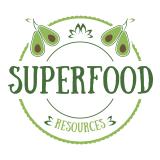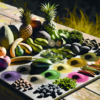Welcome to the Home-Grown Fruit Guide 2024! Whether you're a seasoned gardener or a beginner, there's nothing quite like the taste of fresh, home-grown fruit. In this guide, we'll explore everything you need to know to cultivate a thriving fruit garden. From choosing the right varieties to mastering planting techniques and harvesting at the perfect time, we’ve got you covered. Let’s dive in and turn your garden into a fruitful paradise!
Choosing the Right Fruit Varieties for Your Climate
The first step to a successful home fruit garden is selecting fruit varieties that suit your local climate. Understanding your local climate zone is crucial. For instance, citrus trees thrive in warmer regions like USDA zones 9-11, while apple and cherry trees prefer cooler climates.
Factors to Consider:
- Climate Zones: Refer to USDA Plant Hardiness Zone Map to identify your zone.
- Soil Type: Different fruits prefer different soil types. Blueberries, for example, thrive in acidic soil.
- Sun Exposure: Most fruit trees need full sun (at least 6 hours a day).
Recommended Varieties:
- Warm Climates: Citrus trees, figs, pomegranates
- Cool Climates: Apples, pears, cherry trees
Heirloom vs. Hybrid:
- Heirloom Varieties: Known for their unique flavors and historical significance.
- Hybrid Varieties: Typically bred for disease resistance and higher yields.
Preparing Your Garden for Planting
A bountiful harvest starts with good preparation. Testing and amending your soil can make all the difference in fruit production.
Soil Preparation Tips:
- Soil Testing: Use a soil testing kit to check pH and nutrient levels.
- Amending Soil: Add compost or organic matter to enhance soil fertility.
- Ideal Garden Layout: Ensure your garden layout allows for optimal sunlight and air circulation.
Companion Planting:
Consider planting companion plants like marigolds or chives. They can help deter pests naturally and boost fruit growth.
Planting Techniques for a Successful Harvest
Planting techniques are vital for the development and health of your fruit plants. Follow these guidelines to ensure robust growth.
Step-by-Step Instructions:
- Spacing Requirements: Ensure proper spacing to avoid overcrowding.
- Planting Depth: Plant at the correct depth to support root development.
- Time to Plant: The best time to plant varies by fruit type and climate zone—typically in early spring or late fall.
Water immediately after planting and mulch to retain soil moisture and suppress weeds.
Caring for Your Fruit Plants
Once planted, consistent care is essential. Different fruits have unique needs, but there are general practices that apply across the board.
Watering and Fertilizing:
- Watering Schedules: Adjust watering based on weather conditions. Mulching helps retain moisture.
- Fertilization Tips: Use balanced, slow-release fertilizers to provide steady nutrition.
Pruning Practices:
Prune annually to remove dead or diseased branches. Proper pruning encourages healthy growth and increases fruit production.
Pest and Disease Management
Protecting your fruit garden from pests and diseases is crucial. Early identification and management can save your plants.
Common Issues:
- Pests: Aphids, fruit flies, caterpillars
- Diseases: Blight, mildew
Control Methods:
- Organic Controls: Neem oil, diatomaceous earth
- Chemical Controls: Use as a last resort and follow the manufacturer’s guidelines.
Preventative Strategies:
Rotate crops to maintain soil health and use disease-resistant varieties when possible.
Harvesting Your Fruits at Their Peak
Knowing when and how to harvest your fruits ensures you get the best flavor and quality.
Ripeness Indicators:
- Color and Firmness: Check for the right color and firmness.
- Ease of Picking: Ripe fruits often come off the tree easily.
Harvesting Techniques:
- Tools: Use clean, sharp tools to avoid bruising.
- Timing: Harvest during cool, dry mornings for the best quality.
Post-Harvest Care:
Store harvested fruits in cool, dry places to extend their shelf life.
Preserving and Using Your Harvest
Preserving your harvest ensures you enjoy the fruits of your labor year-round.
Preservation Methods:
- Freezing: An easy way to store fruits for months.
- Canning: Use proper sterilization techniques to prevent contamination.
- Drying: Use a dehydrator or oven for long-term storage.
Recipes and Creative Uses:
- Fruit Jams and Pies: Transform your harvest into delicious treats.
- Smoothies: A quick and healthy way to enjoy your fruits.
- Gifts: Share homemade fruit-based gifts with friends and family.
Growing your own fruit is a rewarding and sustainable way to enjoy fresh produce right from your backyard. By following this Home-Grown Fruit Guide 2024, you'll have the knowledge and confidence needed to cultivate a fruitful garden. So, gather your tools, plant those seeds, and look forward to a bountiful harvest. Happy gardening!
Looking for more tips? Subscribe to our newsletter and join our gardening community today.










